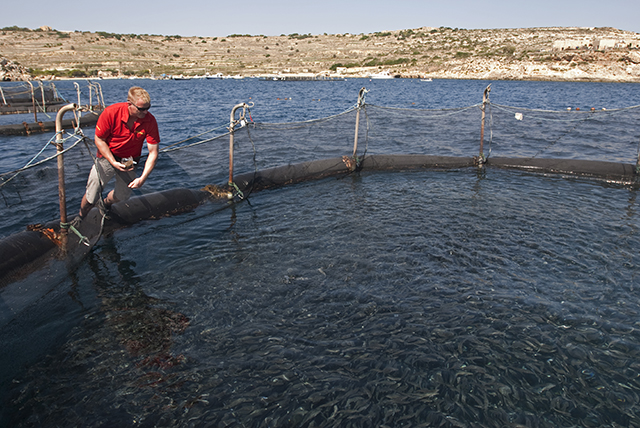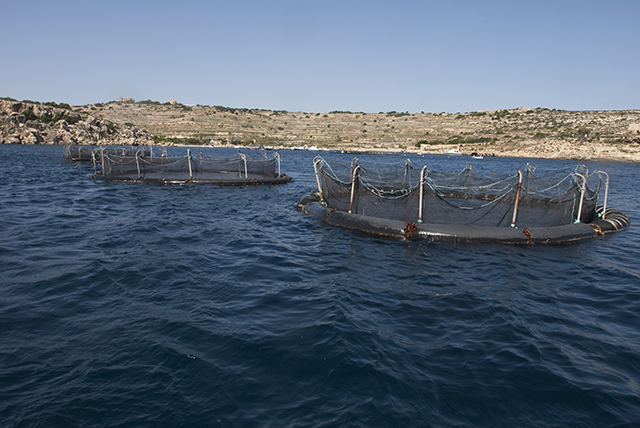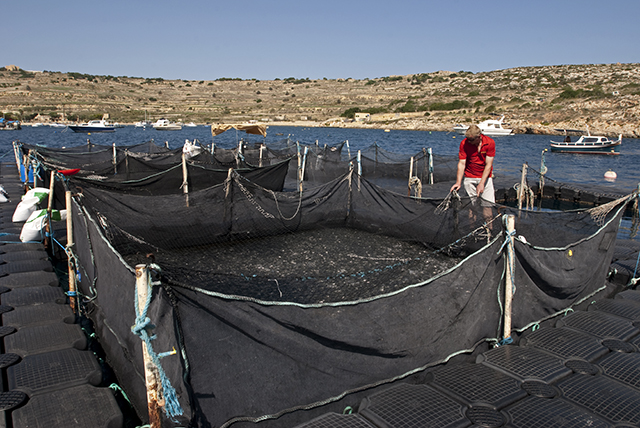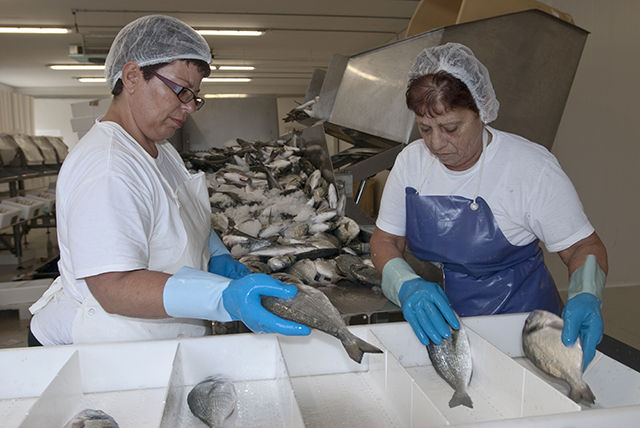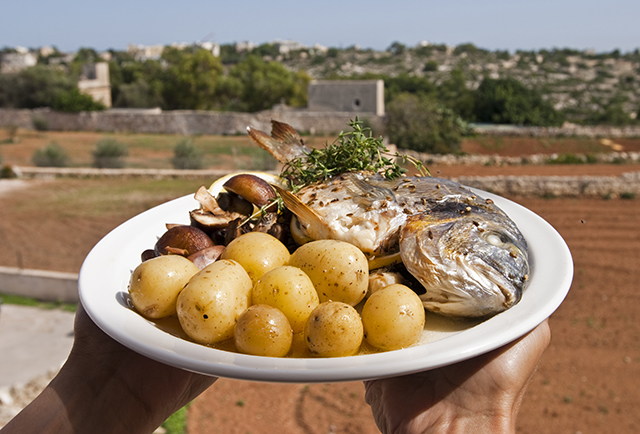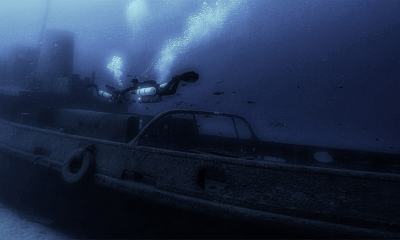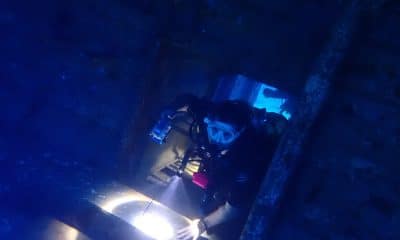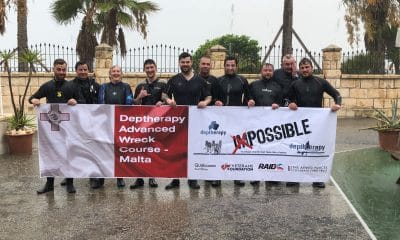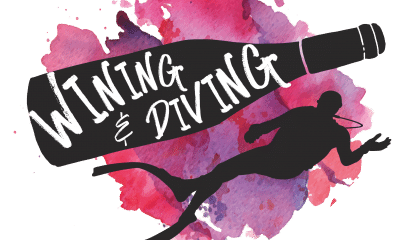News
Aqua Farming: Fish for thought
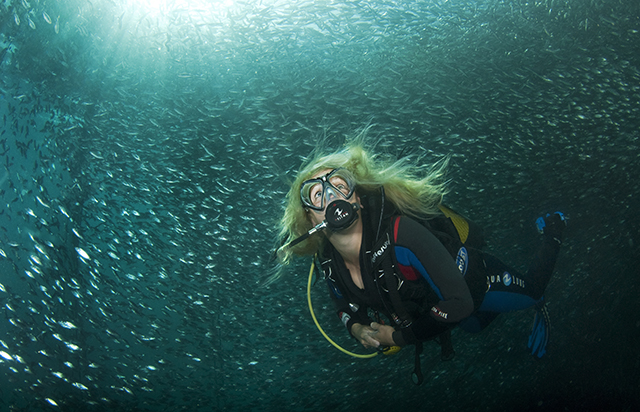
I would love to turn back the clocks and see the underwater world through Jacques Cousteau’s eyes. What an enviable experience – sailing the oceans, exploring pristine reefs thriving with marine life. But alas this is 2015, and as a globe-trotting scuba diver-come-photographer I am acutely aware of the problems facing our planet. Fish provide us with a vital food source but natural stocks are dwindling fast, in some cases so fast that a number of species including tuna are already on the IUCN critically endangered list. I can understand this is a complex situation, especially when there are mouths to feed and livelihoods at stake. Aqua farming may well be a viable solution.
In the quest to learn more I met up with Jes Brinch-Iverson, marine biologist and production manager for Pisciculture Marine De Malte (P2M) Limited. Jes, who has been associated with the company for the past 20 years, agreed to talk to me about the whole ‘farming’ process from its fingerling beginnings right through to serving up on a plate. The Maltese climate (water temp between 14-28 degrees) is ideal for cultivating sea bass (Dicentrarchus labrax), gilt-head sea bream (Sparus aurata) and meagre (Argyrosomus regius). Jes said they are also considering farming amberjacks (Seriola dumerili) sometime in the future.
In all P2M have 19 storage pens at St Pauls Bay and another 5 at Mellieha Bay. Jes said it’s difficult to get permits, especially for the inshore sites. Although the demand for fish farming is increasing there are strict regulations in place dictating depth limitations, environmental issues and proximity to tourism. P2M doesn’t receive any financial help from the Maltese government. Jes said “we do get some European funding for research into new products and improving quality”.
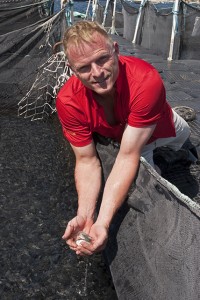 We hopped aboard one of P2M’s work boats and sped across to a cluster of small rectangular shaped pens located just a few hundred metres from the coastline. Jes wanted to show me a new batch of sea bream that had just arrived. The fingerlings or juveniles are supplied by companies from Spain, Italy and France. They are transported in trucks or put on cargo ships in large tanks. Oxygen is pumped into the water and the temperature reduced. This slows down the metabolism of the fish. A standard shipment is around 150,000 fingerlings. During the course of the journey there is about a 1% mortality rate.
We hopped aboard one of P2M’s work boats and sped across to a cluster of small rectangular shaped pens located just a few hundred metres from the coastline. Jes wanted to show me a new batch of sea bream that had just arrived. The fingerlings or juveniles are supplied by companies from Spain, Italy and France. They are transported in trucks or put on cargo ships in large tanks. Oxygen is pumped into the water and the temperature reduced. This slows down the metabolism of the fish. A standard shipment is around 150,000 fingerlings. During the course of the journey there is about a 1% mortality rate.
Jes scooped up a handful of the silvery sea bream fingerlings. He said “only the best quality fish are selected”. The fingerlings are around 100 days old when they arrive at the farm. Each little fish was roughly the size of my little finger and weighed approx 2g. Growth is related to feed and water temperature. Normally the fish are kept inside the holding pens for around 12 – 16 months before harvesting.
The floating pens basically comprise of a large doughnut shaped rubber float with an encompassing net like structure attached below. I watched Jes feeding the hungry hoard. The water surface was literally boiling with activity. The fish are fed twice a day. The fish meal is a mixture of soya, fish oil and vegetable. Proportionately it’s around 50 percent soya. The difference in taste from farmed and naturally wild fish is not significant and the texture is still the same. Jes said “we use high quality feed”. They regularly monitor the health of the fish. Jes said “problems with diseases are very rare. We don’t use any chemicals in the process”. There is also a team of scuba divers on hand to check the nets for holes and do routine maintenance/cleaning tasks. After a particularly bad storm in March 2012 they lost around 8% of the total stock from damaged pens. The local residents had an absolute field day catching all the fish and taking them home for a free bumper supper.
I wanted to try and get some underwater pictures of the farmed fish, so Jes suggested jumping into a 400 cu metre pen which was about 5 metres in diameter and 5 metres deep. The pen was populated with around 100,000 sea bass of sizes between 30 – 40g, which were roughly the length of my hand. Just to make my pictures a little more interesting I invited along local scuba diver Trudy Kerr. This would also add some perspective of size and scale. Both Trudy and Jes were regulars at Maltaqua dive centre based at St Pauls Bay.
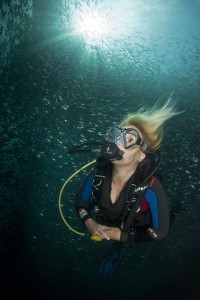
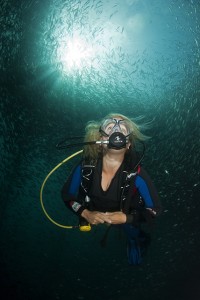 Just before entering the water we encountered a disastrous show stopper of a problem. Trudy’s semi-dry suit zip had stuck open. Unfortunately the zip in question was located right by Trudy’s cleavage. Trudy asked if we should abort the dive. I looked at Jes and he looked back at me. In about 3 micro seconds we made a joint executive decision to soldier on despite this major setback. So the sea bass ended up getting slightly more of an eyeful than expected. No wonder why they were flying around the pen in a complete frenzy! I really enjoyed being inside the pen surrounded by so many fish. I spent more than 45 minutes taking pictures of the swirling shoal. If I have one complaint to make, the fish could have been a tad bigger. Otherwise the visibility wasn’t too bad, there wasn’t too much detritus (fish poo) floating about and the lighting was okay. Trudy’s zip had by that point miraculously repaired itself.
Just before entering the water we encountered a disastrous show stopper of a problem. Trudy’s semi-dry suit zip had stuck open. Unfortunately the zip in question was located right by Trudy’s cleavage. Trudy asked if we should abort the dive. I looked at Jes and he looked back at me. In about 3 micro seconds we made a joint executive decision to soldier on despite this major setback. So the sea bass ended up getting slightly more of an eyeful than expected. No wonder why they were flying around the pen in a complete frenzy! I really enjoyed being inside the pen surrounded by so many fish. I spent more than 45 minutes taking pictures of the swirling shoal. If I have one complaint to make, the fish could have been a tad bigger. Otherwise the visibility wasn’t too bad, there wasn’t too much detritus (fish poo) floating about and the lighting was okay. Trudy’s zip had by that point miraculously repaired itself.
I had noticed quite a few local fishermen dangling rods close to the holding pens but couldn’t quite fathom out why, unless of course some of the fish managed to escaped from time to time. I heard Trudy shouting through her regulator and pointing outside the pen. I followed her line of sight and saw a giant trevally shaped predatory fish circling us. It was absolutely massive (1.5 metres long) and made me wonder what else might be out there beyond the mesh. Now that really was a scary thought… especially with the tuna pens being so close…
When we were safely back on board Jes took us over to one of the offshore pens full of larger sea bass. Jes said the 3,000 cu metre enclosure was around 15 metres in diameter and 12 metres deep. But the visibility was not so good inside this pen and the skittish fish were not so easy to photograph. We found 100’s of sea hares lying on the bottom which kept Trudy occupied for ages. Sea hares are herbivores so there must have been some kind of algae or plant life growing inside the pens that they liked to eat; or was it the fish poo? After 25 frustrating backscatter filled minutes I gave up taking photographs. I noticed there was a handful of dead fish bobbing about on the surface. Jes said this was the normal fall out rate. I’m not sure what had killed them and should have asked the question.
Before returning to the jetty Jes showed me the special harvesting boat. It works just like a giant vacuum cleaner sucking up the fish and passing them through a fast freeze unit. The cold shock instantly kills the fish. Any delay will affect the quality. They are then transferred to the nearby packing and processing plant. P2M had recently moved to new purpose built premises which also included a storage facility and office space. The company is privately owned and presently employs 51 people. Jes took me on a tour around the new plant. They were in the middle of processing a batch of sea bream. I watched the bream being unloaded and sorted onto a conveyor belt. The fish are rinsed, packaged up into boxes (at around 7kg a box) and transferred to ice trucks ready for delivery. I was impressed. The entire process took no more than 45 minutes.
The fish are not gutted and filleted, they are left whole. Jes said that the ideal ‘portion’ size for consumers weighs between 350 and 450g. On the open market prices are around 4 to 5 euro per kg. There are presently 6 fish farms in Malta exporting around 2,000 tons of cultivated fish each year of which a large percentage is shipped to supermarket chains in Italy. Delivery times from the holding pens to the local Maltese restaurants can be just a few hours. International deliveries usually take up to 24 hours. Jes said the fish have a 12-day shelf life.
I had learnt that Aqua farming doesn’t come cheap and there are many costs to consider. P2M do make a profit but fish are deemed an expensive commodity and demand is not so high. Jes said “the supermarkets dictate the prices and make most of the money”. Malta is planning to expand the aqua farming industry over the coming years. In my mind this is great news. More farmed fish means less fish taken from the sea which gives me a better chance of getting some half decent photographs.
Just to round off my day Jes handed me a sea bream sample for taste testing. I had never eaten sea bream before so was really looking forward to checking it out. The fish didn’t take very long to prepare or cook, especially as I wasn’t cooking it! I thought the roasted sea bream had quite a delicate texture and most of the flavour seemed to come from the herbs and the lemon. There were a few bones to contend with, but what did I expect – this was a fish! I would definitely eat it again and a bottle of chilled Gavi is the perfect accompaniment.
What are your views on aqua farming? Let us know in the comments section below.
Blogs
Discover Curaçao with the Ultimate Dive Vacation Guide – 2024 DEMA Special Edition

Dive Travel Curaçao is thrilled to announce the launch of the Curaçao Dive Vacation Guide – 2024 DEMA Special Edition, an expertly curated resource that unveils the unparalleled dive experiences and vacation possibilities awaiting you in Curaçao. Produced exclusively for the Diving Equipment & Marketing Association (DEMA) Show 2024, this special edition guide is packed with exclusive insights, travel tips, and limited-time DEMA offers that make it easier than ever to explore Curaçao’s stunning underwater landscapes and vibrant culture.
Explore Curaçao’s Unmatched Diving Opportunities
With over 70 diverse dive sites along its southern coastline, Curaçao is a bucket-list destination for divers of all experience levels. From thriving coral reefs and intricate marine ecosystems to historic shipwrecks, the island offers a variety of underwater experiences that are hard to match. The Curaçao Dive Vacation Guide – 2024 DEMA Special Edition provides detailed recommendations for both shore and boat diving, making it a valuable tool for divers seeking the best entry points, pristine reefs, and hidden treasures along the coastline. Whether you are an avid wreck diver, or a beginner interested in shallow reefs, Curaçao has it all.

Uncover Eco-Friendly Dive Resorts and Top Dive Operators
This DEMA 2024-exclusive Curaçao guide goes beyond diving to feature insider information on Curaçao’s eco-friendly accommodations, dive resorts, and top-rated dive operators committed to sustainable dive tourism. From all-inclusive resorts that support coral reef restoration initiatives to charming boutique hotels near prime dive locations, the guide helps travelers find the ideal stay to match their vacation goals. It also spotlights trusted dive operators on the island who prioritize environmental preservation, offering travelers a way to enjoy the underwater world responsibly.

Immerse Yourself in Curaçao’s Culture, Culinary Delights, and Adventure
Curaçao offers a vibrant Caribbean culture rich in history, music, and culinary fusion. The guide reveals Curaçao’s hidden gems, including culinary hotspots, historical sites, and eco-tourism opportunities that will appeal to both divers and non-divers. Visitors can explore the island’s iconic architecture, savor a diverse range of dishes influenced by Caribbean, European, and South American flavors, and embark on land-based eco-adventures, such as hiking, cave exploration, and visiting national parks.

Exclusive DEMA 2024 Specials and Limited-Time Dive Packages
This special edition guide features limited-time DEMA 2024 offers on dive packages, accommodations, and excursions. Travelers who book through Dive Travel Curaçao, or our Curaçao dive travel partners attending DEMA, will have access to exclusive discounts on custom dive vacation packages, making it easier to plan an affordable, high-quality dive trip that fits your preferences. The Curaçao Dive Vacation Guide – 2024 DEMA Special Edition is designed to simplify your travel planning and help you dive deeper into the incredible experiences that Curaçao has to offer.
It’s Time to Dive Curaçao!
Now is the time to discover why Curaçao is a top dive destination in the Caribbean! Dive Travel Curaçao invites you to experience an unforgettable dive vacation with exclusive DEMA 2024 specials tailored just for you. To secure your spot, download a copy of the Curaçao Dive Vacation Guide – 2024 DEMA Special Edition and contact the Dive Travel Curaçao team to start customizing your Caribbean dive adventure today.
For more information and bookings, please visit Dive Curaçao’s website or contact our reservations team directly.

News
Santa Divers take the Plunge for Charity

Ho Ho Ho! Vobster Quay’s recording-breaking charity Santa diving event returns on Sunday 15th December 2024 for another round of festive fundraising frivolities. Run in aid of the Royal National Lifeboat Institution (RNLI) and Help For Heroes, this ever-popular annual fundraising event aims to raise sack-loads of cash for these two very deserving charities.
Divers of all levels are invited to grab their Santa outfits – and as much festive cheer as they can muster – and head down to Vobster Quay near Mells, Somerset for a mass sponsored Santa dive in aid of charity. In previous years, the event has attracted divers from the far corners of the UK to join in the festive merriment for a final festive dive before the Christmas and New Year break. Back in 2015, the event smashed the world record for the most Santa divers with 188 divers taking to the waters donning their festive finery – a record that remains unbeaten to this day!

Vobster Santas isn’t just about setting records – it’s also about raising some serious cash for charity. Vobster Quay encourages all divers to get into the spirit of the season to raise much-needed funds for two very deserving charities – the Royal National Lifeboat Institution (RNLI) and Help For Heroes.
Through individual sponsorship and online donations, divers can invite their friends, family and work colleagues to sponsor them to plunge into the balmy waters of Vobster Quay dressed in full festive finery. Since the very first Santa dive in 2007, the event has raised over £52,000 for charity. “It’s been over 17 years since the very first charity Santa dive took place at Vobster Quay and every year the event just keeps getting bigger and better” enthused Vobster Quay owner, Amy Stanton.
“Vobster Santas is a great way for divers to say a massive thank you to the both the RNLI and Help For Heroes – two very deserving charities close to our hearts. We’re immensely proud of all that Vobster Santas has achieved and hope that even more divers will join this year’s event on Sunday 15th December. I’m confident that we can make Vobster Santas 2024 the biggest yet!”.
Divers wishing to participate can get involved by simply registering their attendance at
www.vobster.com/event-vobstersantas.php.

-

 News1 month ago
News1 month agoIconic SS United States to become the World’s Largest Artificial Reef
-

 Blogs3 months ago
Blogs3 months agoNovoScuba’s Game-Changing Approach for Dive Store Owners: WE PAY YOU!
-

 News2 months ago
News2 months agoBook Review – 52 Assignments: Underwater Photography
-

 Gear News2 months ago
Gear News2 months agoDYNAMICNORD – New German diving brand enters the British market
-

 News2 months ago
News2 months agoExploring Cenote El Pit: A Diver’s Dream
-

 Gear News2 months ago
Gear News2 months agoTry BARE drysuits (and maybe even win one!) this Friday with Sea & Sea at North West Dive Fest
-

 News3 months ago
News3 months agoComing Soon – 52 Assignments
-

 Marine Life & Conservation2 months ago
Marine Life & Conservation2 months agoBook Review: Coral Triangle Cameos


